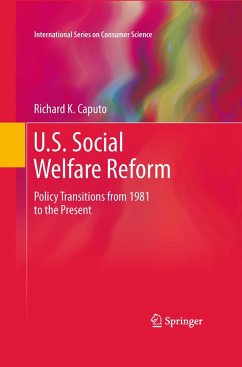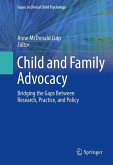U. S. Social Welfare Reform examines pivotal changes in social welfare for low-income families in the United States between 1981, the advent of the Reagan administration, and 2008, the end of the G.W. Bush administration. It focuses on the change from the Federal-state open entitlement Aid to Families with Dependent Children (AFDC) program to the time-limited state run Temporary Assistance to Needy Families (TANF) program which Congress authorized with passage of the Personal Responsibility and Work Opportunity Act of 1996. The book also focuses on the development of the Earned Income Tax Credit (EITC) program, enacted in 1975 against the backdrop of failed efforts to nationalize AFDC which aimed at providing a basic income to all poor families, but which blossomed with continued bipartisan support in the 1990s. This book also explores alternative strategies to assist low-income families, including job training programs. It present original research on the educational and economic well-being of youth from low-income families who participated in government sponsored job training programs in the late 1970 and early 1980s.
The book seeks a middle ground between general and technical social policy texts. It provides more depth than is available in the more general social policy texts. Further, while the more comprehensive texts often rely on government documents and reports relying on Current Population Survey data to profile program use, this book relies on panel data from the National Longitudinal Surveys and presents original research that builds upon prior related research and scholarship about the role of the federal government in social welfare provisioning in general and AFDC/TANF and EITC use in particular and on school-to-work transition programs. It presents related technical material in a narrative style better suited to professionals and policy makers who may lack expertise in quantitative analysis.
The book seeks a middle ground between general and technical social policy texts. It provides more depth than is available in the more general social policy texts. Further, while the more comprehensive texts often rely on government documents and reports relying on Current Population Survey data to profile program use, this book relies on panel data from the National Longitudinal Surveys and presents original research that builds upon prior related research and scholarship about the role of the federal government in social welfare provisioning in general and AFDC/TANF and EITC use in particular and on school-to-work transition programs. It presents related technical material in a narrative style better suited to professionals and policy makers who may lack expertise in quantitative analysis.








